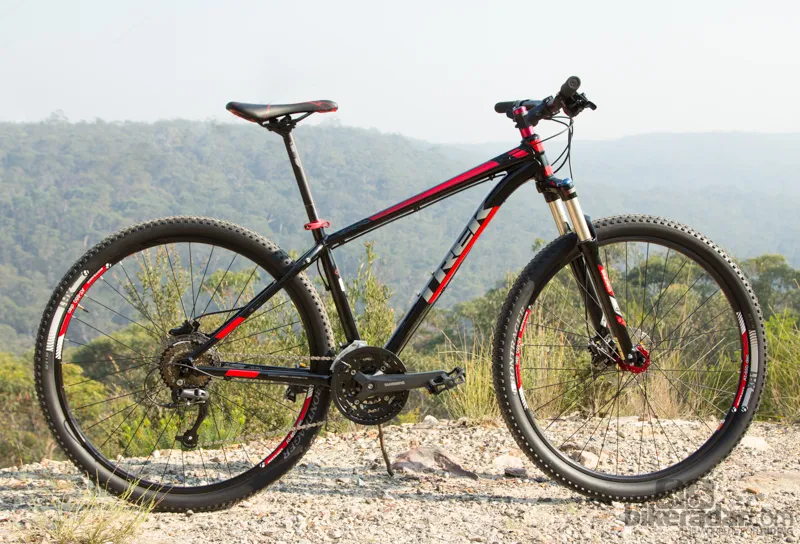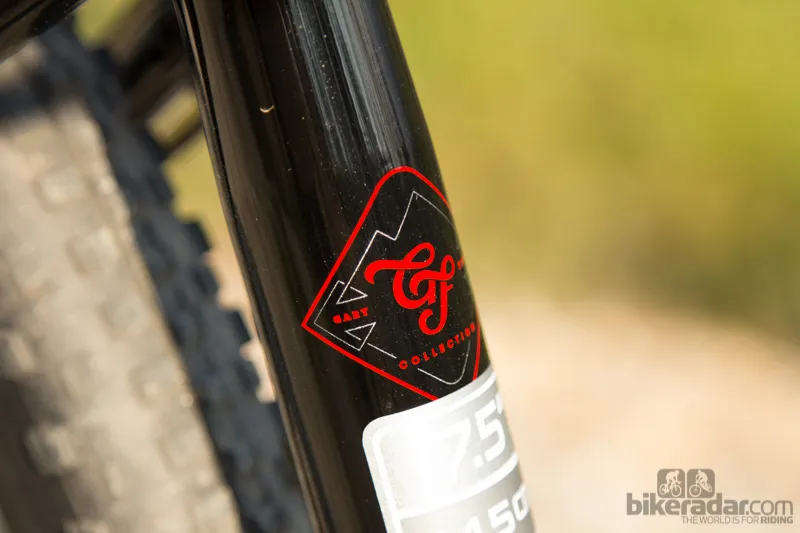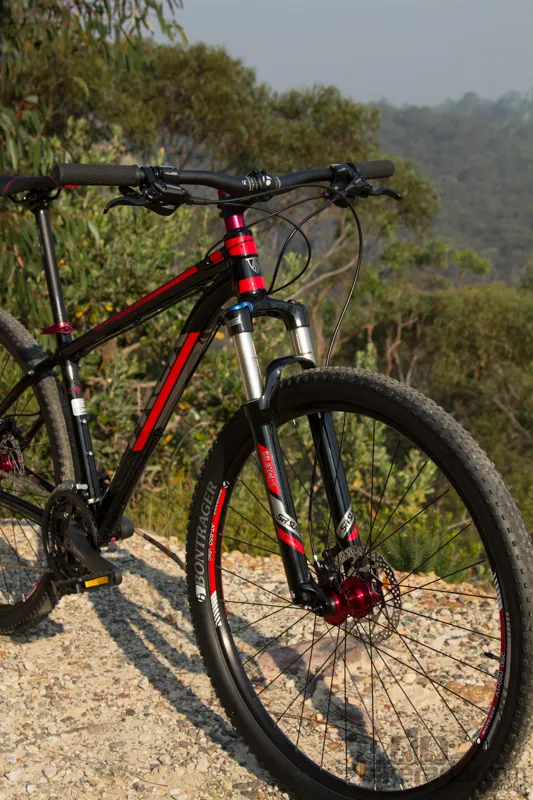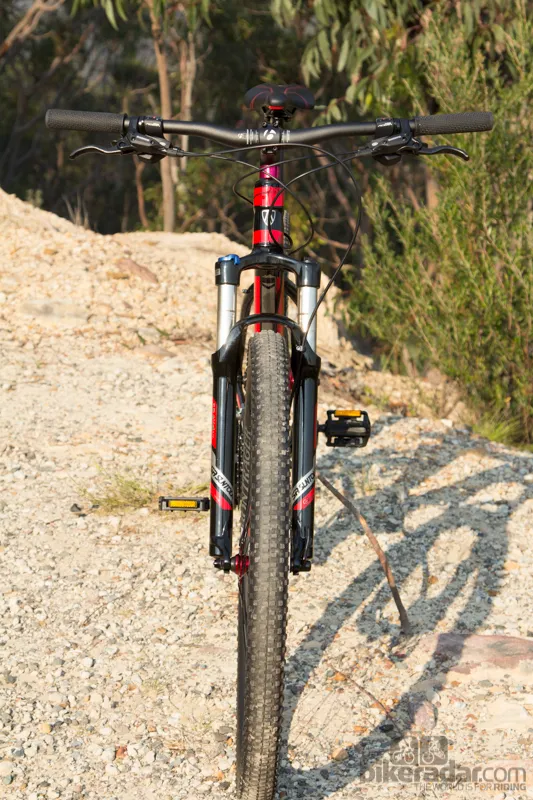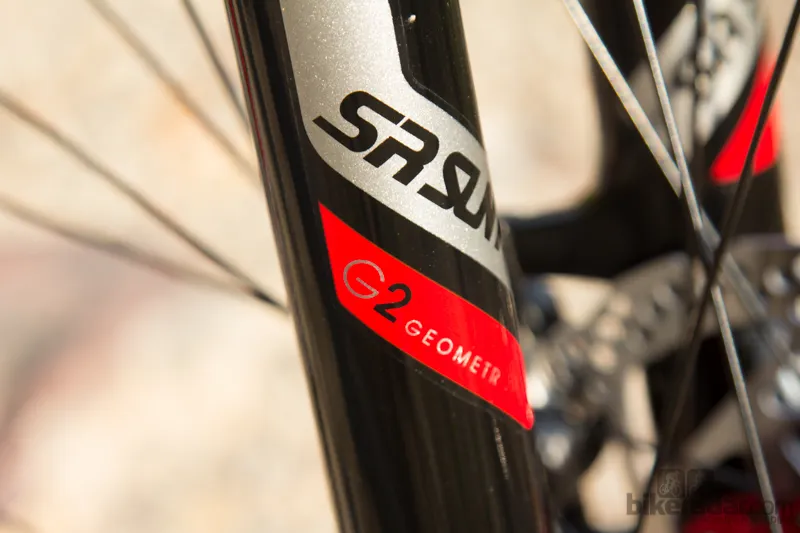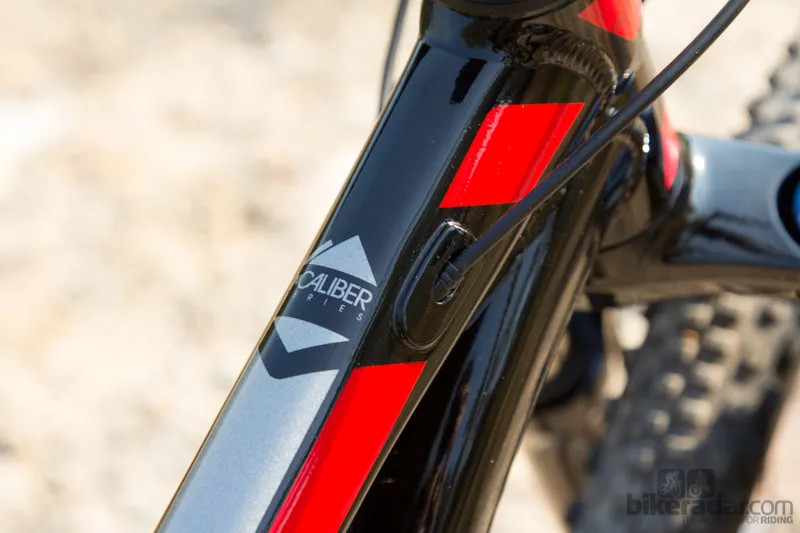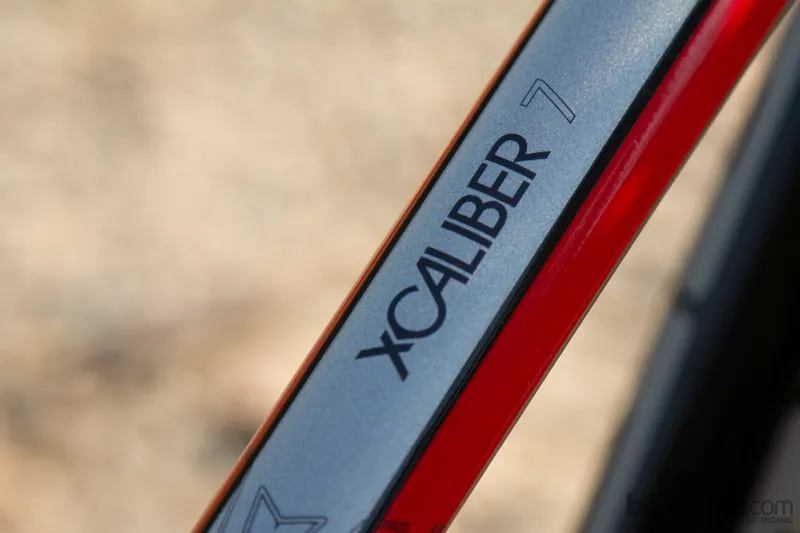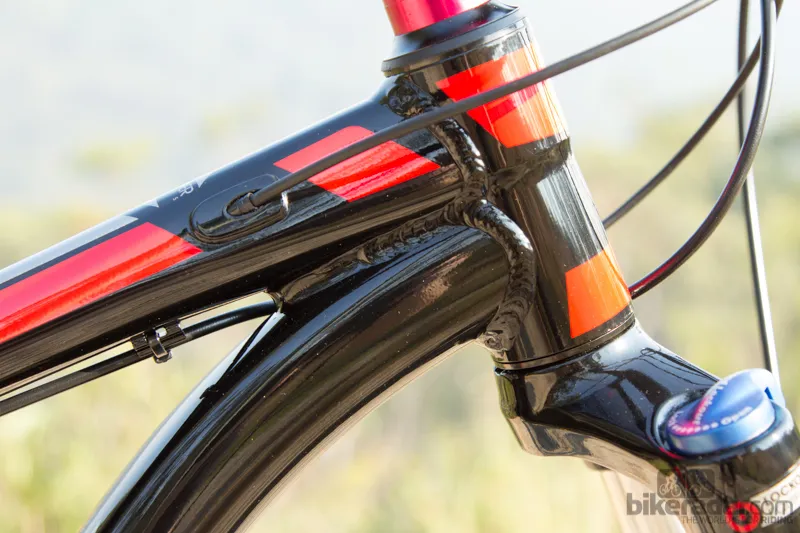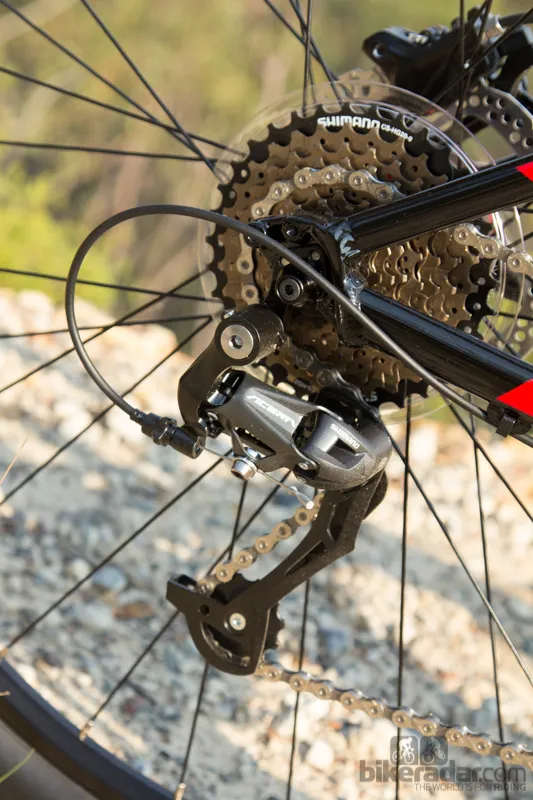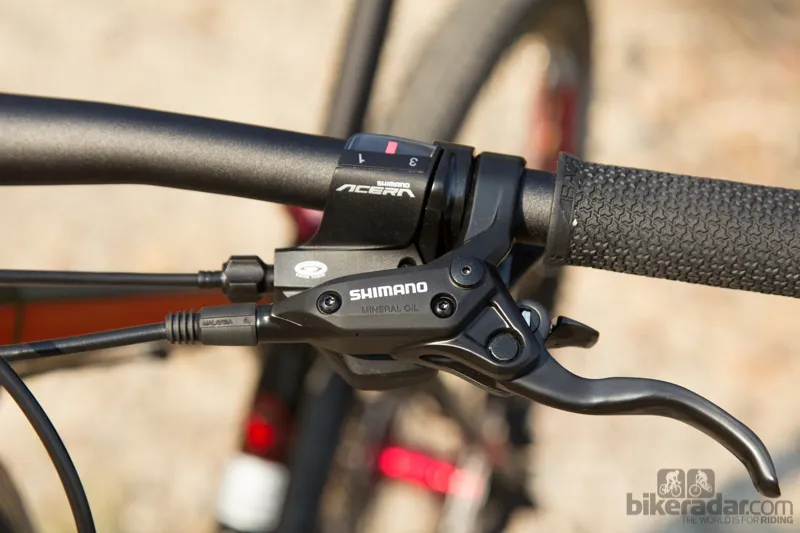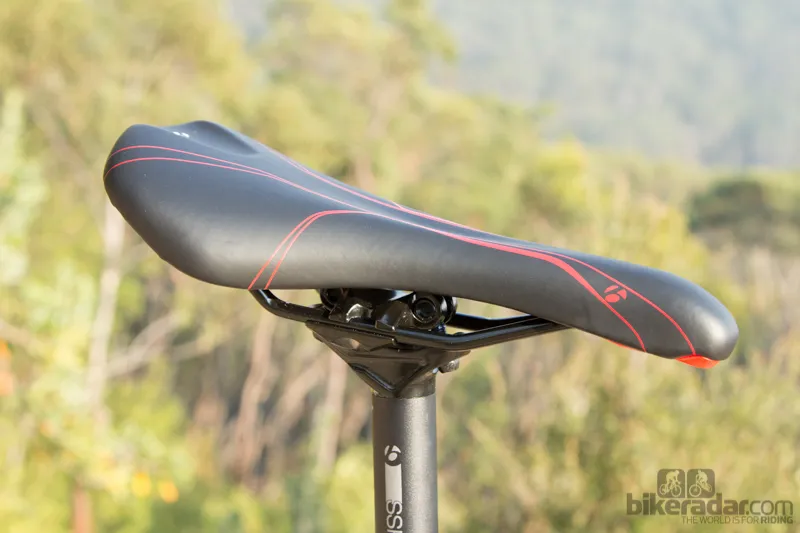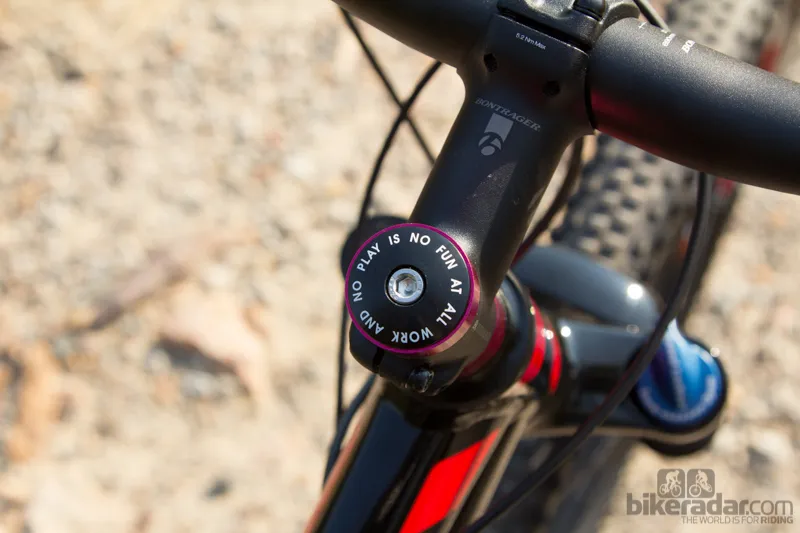The name X-Caliber isn't new to Trek, but for 2014, it will refer to an entire range of entry level 29er hardtails. The frame of this new X-Caliber range has been entirely redesigned, borrowing much design inspiration from Trek’s World Cup winning Superfly line-up.
Note: We have now reviewed the 2015 Trek X-Caliber 8.
Ride and Handling: elite handling and confidence for beginners
When it comes to 29in wheels, Trek and their Gary Fisher collection have been doing them the longest. The X-Caliber has their dialled and respected geometry, including Trek’s proprietary G2, which changes the fork offset and aims to create a livelier ride.
We found the X-Caliber nimble and playful on the trail. The combination of a roomy top tube and short 75mm stem made it easy to loft the front wheel and get airborne. With our position centrally between the wheels, long climbs were comfortable, and maintaining power felt natural.
The quick, joyful handling and perfectly balanced geometry went a long way to hiding the overall high weight. It lacked urgency on steep climbs and stop-and-start riding, but once we got the X-Caliber going, the ride was brilliant, helped by the big wheels' fast-rolling tyres.
The SR Suntour XCR fork featured well-sized 32mm stanchions and helped the X-Caliber hold its line though corners and rock gardens. The suspension was basic but effective. A fixed rebound setting offered a balanced feel without harsh spiking or excessive packing down between hits. We found the spring on a medium test bike was ideal for a 70 to 85kg rider, offering respectable control over both small and large bumps.
The fork’s lockout can be activated while on the bike and would hold the position it was locked at. So if you wanted a lower front-end for road riding, you can push down on the fork, lock it, and you’ll achieve a lower position.

Short head tube and plenty of steerer tube length
The short head tube and long steerer tube provided plenty of handlebar height adjustment and we easily found a comfortable height with room to spare, which is not the case with many other entry-level 29ers.
Frame and Equipment: money spent on areas that matter most
The X-Caliber frame is no doubt the highlight of the package, made with Trek’s Alpha Gold aluminium. With heavily shaped and butted tubes, sparkling paint, an internally guided front derailleur cable and a fully housed rear derailleur cable, this frame would be befitting of bikes twice its price.

Rear pannier mounts add extra versatility
It has great off-road potential, and more versatility boxes are ticked with solid rear rack mounts. A change to 700c road tyres would make it a fast commuter for mid-week use too.
There's no chainstay or seatstay bridge at the rear of the frame, so tyre clearance is generous with little place for mud to hang onto. Sadly, the cheap front derailleur undid these clearance benefits, and if you want to fit a wider rear tyre you will need a slim-profile front derailleur.
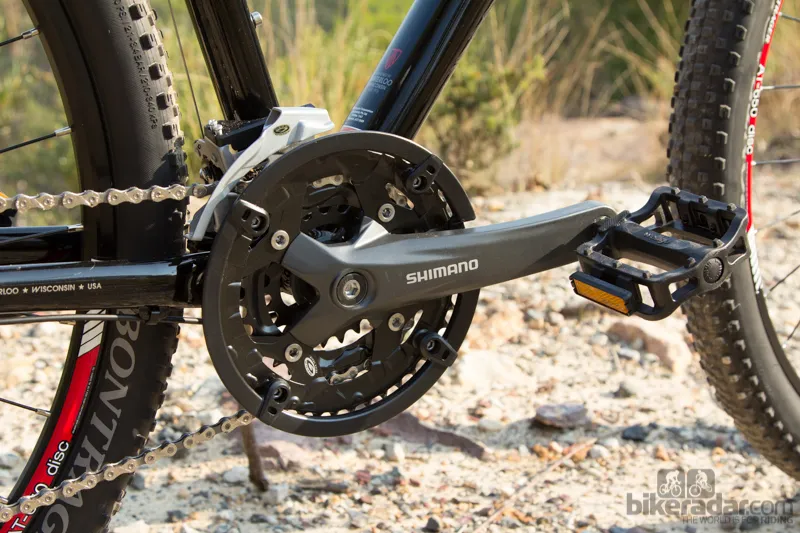
Basic Shimano gears – the front derailleur didn't leave much tyre clearance
Given the entry-level price of the X-Caliber 7, something had to give – and in this case it was the drivetrain, and what a smart decision that was. The industry norm is to spec a high quality drivetrain, save money elsewhere and let the customer make their purchase decision based on the level of Shimano equipment. But the truth is that the Shimano parts are the cheapest to replace and the most likely to get damaged, so instead Trek have invested in longer lasting, more crucial components, such as the brakes and fork.
The 27-speed drivetrain provided plenty range and the mix of Shimano Acera and Altus performed better than expected, although the soft rear derailleur caused excessive chain slap. The Acera shifter offered a better feel than commonly used cheaper shifters. The basic Shimano chainset is hefty and the plastic leg guard won’t last many missed log hops, but replaceable chainrings were a bonus.
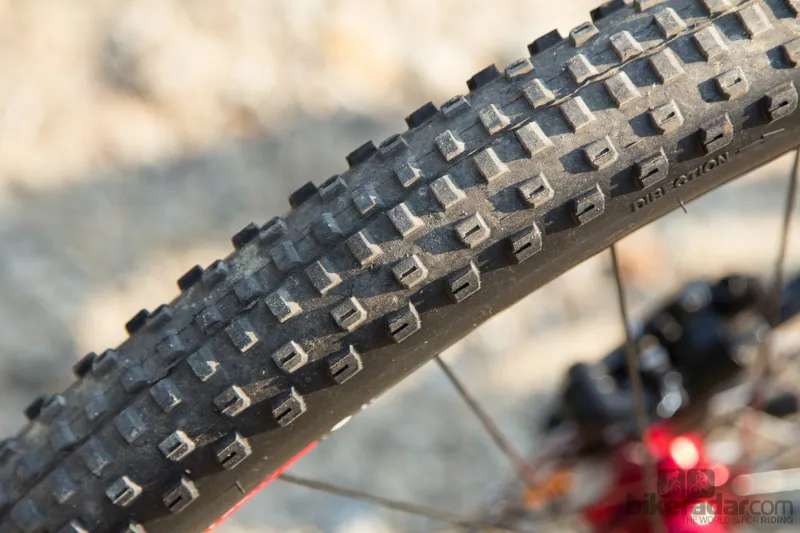
The XR1 tyres were fast and grippy
The Bontrager XR1 tyres were fast rolling, full of traction in dry conditions and well-suited to the versatile X-Caliber. Tyres sizes are mixed, with a wider front tyre for traction and a slimmer rear for weight. Trek's componentry choices show real off-road knowledge.
Much of the finishing kit is from Trek’s house brand, Bontrager, a well-respected component brand in their own right. The basic Bontrager parts offered a few highlights, such as the comfortable Evoke saddle, the secure and slim twin-bolt seatpost, and the super wide, perfectly swept handlebars. Even the wheels (with their bling red hubs) felt stiff and capable enough for serious off-road use – they were only let-down in the weight department.
The Shimano M395 hydraulic brakes offered consistent braking performance and low noise, they are our favourite brake for the price point. Our only gripe is the continual use of a cheaper 'resin only' brake rotor, which prevents the use of a more durable sintered brake pad. An adjustable reach lever blade is another bonus, something omitted from often-seen basic Tektro units.
The included pedals are basic plastic numbers, best suited for car park tests. Be sure to factor in the additional expense of a pair of metal platform or clipless pedals, because you'll want them.
The X-Calibre is a true class act, with an amazingly well executed frame with exceptional geometry, well behaved fork and quality finishing kit. Ride the guts out of it and upgrade the derailleurs once they break or wear – the X-Calibre is a top pick.
Note: We have now reviewed the 2015 Trek X-Caliber 8.
